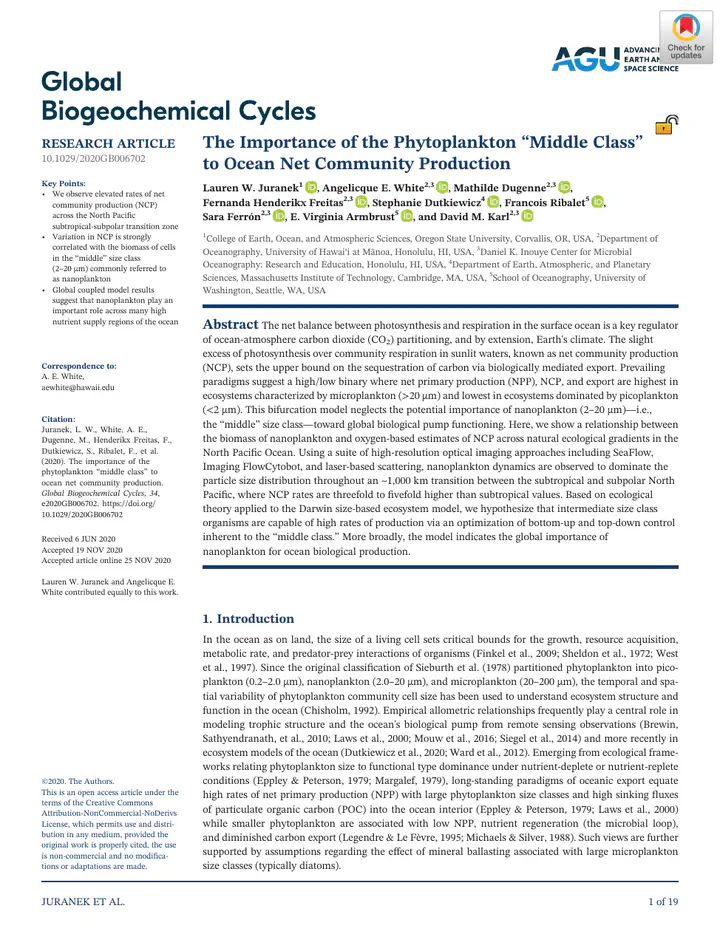
Abstract
The net balance between photosynthesis and respiration in the surface ocean is a key regulator of ocean-atmosphere carbon dioxide (CO2) partitioning, and by extension, Earth’s climate. The slight excess of photosynthesis over community respiration in sunlit waters, known as net community production (NCP), sets the upper bound on the sequestration of carbon via biologically mediated export. Prevailing paradigms suggest a high/low binary where net primary production (NPP), NCP, and export are highest in ecosystems characterized by microplankton (>20 um) and lowest in ecosystems dominated by picoplankton (<2 um). This bifurcation model neglects the potential importance of nanoplankton (2–20 um)—i.e., the “middle” size class—toward global biological pump functioning. Here, we show a relationship between the biomass of nanoplankton and oxygen-based estimates of NCP across natural ecological gradients in the North Pacific Ocean. Using a suite of high-resolution optical imaging approaches including SeaFlow, Imaging FlowCytobot, and laser-based scattering, nanoplankton dynamics are observed to dominate the particle size distribution throughout a 1,000 km transition between the subtropical and subpolar North Pacific, where NCP rates are threefold to fivefold higher than subtropical values. Based on ecological theory applied to the Darwin size-based ecosystem model, we hypothesize that intermediate size class organisms are capable of high rates of production via an optimization of bottom-up and top-down control inherent to the “middle class.” More broadly, the model indicates the global importance of nanoplankton for ocean biological production.